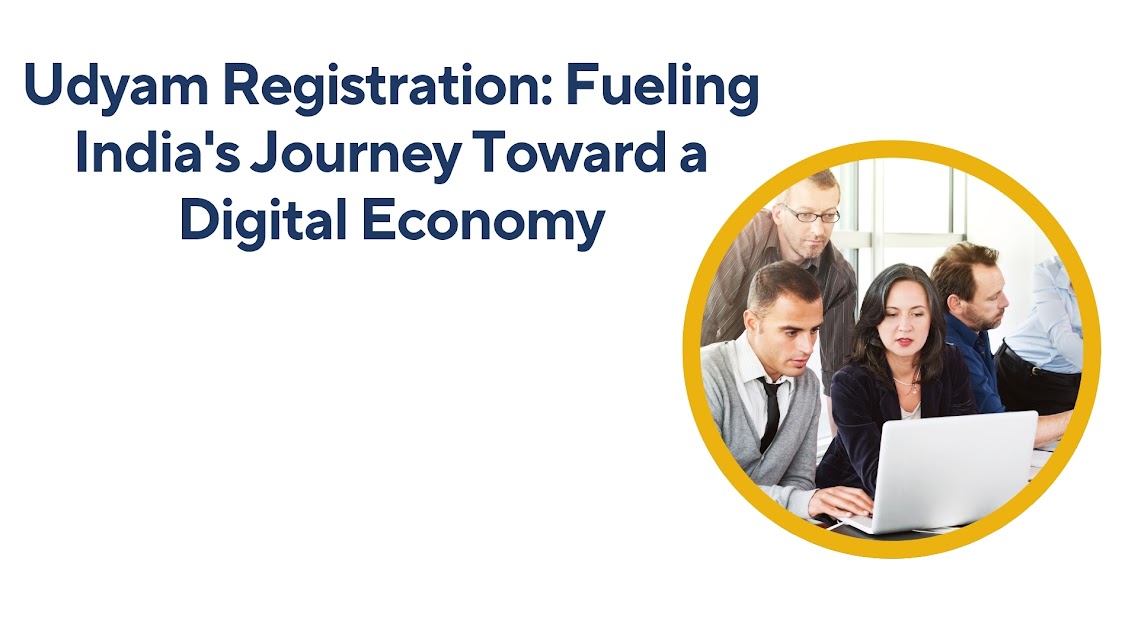India’s transformation into a digitally empowered economy is no longer a distant vision—it’s an ongoing reality. At the core of this change is a national effort to simplify processes, empower entrepreneurs, and streamline business operations—especially for Micro, Small, and Medium Enterprises (MSMEs). A major milestone in this digital journey was the launch of the Udyam Registration on July 1, 2020, which replaced the older Udyog Aadhaar Memorandum (UAM) system with a fully digital, efficient, and transparent platform.
However, Udyam Registration is not just a procedural upgrade—it is a key player in India’s broader Digital India mission, enabling MSMEs to become part of a formal, modern, and tech-integrated economic landscape. This article explores how Udyam Registration contributes to India’s digital ambitions, supports small businesses, and builds the foundation for inclusive, sustainable growth.
India’s Digital Economy Mission: A Quick Overview
To understand the relevance of Udyam Registration, we must revisit the objectives of the Digital India initiative, launched in 2015. This nationwide program is based on three pillars:
- Digital infrastructure as a core utility
- Services available on demand
- Digitally empowering citizens
From Aadhaar to UPI, DigiLocker to GeM, these initiatives have dramatically reshaped the way citizens, businesses, and the government interact. The goal: make India a $1 trillion digital economy by integrating tech into governance, services, and commerce.
Udyam Registration complements this mission by offering MSMEs a streamlined, paperless, and real-time registration process—laying the digital foundation for millions of small businesses.
What is Udyam Registration?
Udyam Registration is the official digital system through which MSMEs can register themselves and gain access to government-backed schemes, subsidies, incentives, and institutional support. It offers several upgrades over the previous system:
- MSMEs are classified based on investment in plant/machinery or equipment and annual turnover.
- It leverages real-time government databases for verification.
- It eliminates the need for physical documentation and in-person visits.
This dynamic, tech-enabled approach has shifted MSME registration from a passive process to an active digital identity system.
Barriers to Overcome and the Way Forward
Despite its success, Udyam Registration still faces a few challenges:
1. Digital Accessibility
- Poor internet infrastructure in rural areas
- Limited digital skills among older business owners
- Language limitations in the portal interface
Solution: Expand BharatNet, introduce regional language options, and strengthen Common Service Centers (CSCs) for handholding support.
2. Lack of Awareness
- Many micro-enterprises remain unaware of the benefits
- Fear of complex compliance procedures deters participation
Solution: Launch awareness campaigns, industry workshops, and collaborations with local business associations.
3. Integration with Other Platforms
- Limited interoperability with systems like ONDC and TReDS
Solution: Develop a unified MSME Digital Identity based on Udyam, linking it to all relevant services and platforms.
Step-by-Step Guide: How to Register on the Udyam Portal
- Go to the Udyam Website: Visit the official Udyam Registration portal.
- Enter Business Details: Fill in information like business name, type, PAN, bank details, and contact information.
- Review and Submit: Double-check the entries and submit your application.
- Make Payment: Pay the applicable registration fee securely online.
- OTP Verification: Receive a one-time password (OTP) on the mobile linked to your Aadhaar.
- Complete Verification: Enter the OTP to verify your identity.
- Get Certificate: Your Udyam certificate will be emailed upon successful registration.
Suggested read:- Forgot Udyam Registration number
Conclusion
Udyam Registration is more than a compliance process—it’s a cornerstone of India’s digital economic framework. By formalizing MSMEs and integrating them into digital systems, India is enabling broad-based, tech-driven, and inclusive growth.
As digital infrastructure deepens and MSMEs embrace change, Udyam will continue to be a crucial part of India’s development story. However, for its full potential to be realized, the government and ecosystem players must keep pushing for greater inclusion, awareness, and innovation.
With strategic upgrades and widespread adoption, Udyam Registration will not only fuel business growth—but help shape India into a global leader in the digital economy.



